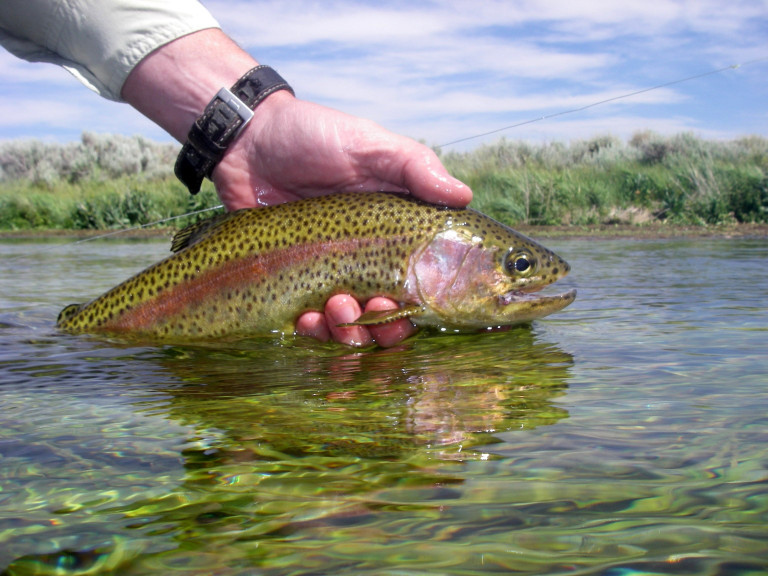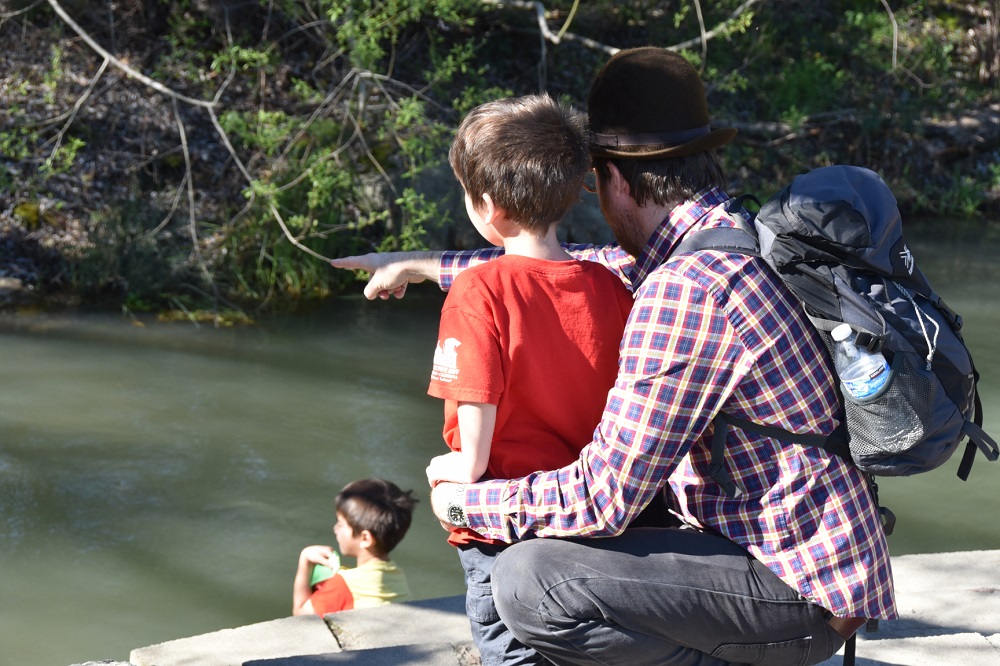Fish Report for 4-20-2017
Properly Catching and Releasing Fish while Taking Photos?

by Carrie Wilson
4-20-2017
Website
Question: My friends and I are all fly fishermen who promote catch and release fishing rather than taking fish for consumption. Many other fishermen, fishing guides and lodges, as well as most fly fishing magazines also claim to share this philosophy but then publish untold numbers of photos of people holding the fish they’ve caught. Typically these photos reveal the fish being held for quite a few seconds out of water, and clearly their slime barrier is being broken by the clutching hands. I wonder how many fish handled in this way ultimately die from the stress of being caught, held out of water and having their protective coating compromised. While growing up, I was taught if you break the slime barrier, the fish will likely die. Is this true? Moreover, most anglers I know count successful days of fishing as catching (and releasing) as many fish as possible. If you consider the increased probability of a fish dying from being caught and held, multiplied by the number of fish caught, there could be a lot of mortality which goes directly against the point of catch and release. Can you please provide some information on this issue? (David W.)
Answer: While many photo layouts suggest prolonged time out of water, it can obviously vary greatly. A good rule of thumb is to hold your breath when you lift the fish and get it back into the water before you run out of breath. Wetting hands before handling fish is probably the most effective method to minimize damage to the slime coating. Handling fish with dry hands generally removes at least some areas of this protective barrier, subjecting the fish to increased risk of fungal or other infection (though not necessarily mortality). If extra time is needed to set up the photo or make adjustments to correct for lighting problems, etc. the fish should be retained under water in a net for as much time as possible.
There are three important practices that will help reduce mortality: 1) keep most of the body of the fish in the water while photographing it, particularly the opercula and gills so they remain oxygenated, 2) always hold the fish with wet hands underneath the pectoral fins (near the head) and at the caudal peduncle (narrow part just forward of the caudal or tail fin) to avoid injury to the vital organs in the belly, and 3) assuming you have a fishing partner that will serve as photographer, have them hold your net under the fish to avoid dropping it while you are preparing to take the pictures. Dropping the fish, particularly on dry ground, could cause both injury and removal of the slime coat.
When transporting turkeys home, which parts are required for ID?
Question: What portions of a turkey is a hunter required to retain for identification purposes? I’m not sure that “plucking a turkey in the field but leaving the beard attached” is sufficient to stay legal when transporting. While keeping the beard would certainly help identify, I believe a fully feathered head or wing is the actual requirement. In fact, if a hunter chooses to pluck both wings and leave the “fully feathered head” attached, would that be enough proof for identification purposes? Please advise. (Blake D.)
Answer: Hunters are not required to retain the turkey’s beard. However, “all birds, including migratory game birds, possessed or transported within California must have a fully feathered wing or head attached until placed into a personal abode or commercial preservation facility or when being prepared for immediate consumption” (California Code of Regulations Title 14, section 251.7).
Since the law only authorizes the take of bearded turkeys during the spring season, the California Department of Fish and Wildlife (CDFW) recommends leaving the beard attached during the spring season (CCR Title 14, section 300).
How to properly preserve and transport Pacific halibut?
Question: I’m planning some trips this year to fish for Pacific Halibut. If we should happen to catch one of any size, what is the legal way to transport a fish if it won’t fit in a cooler? Could it be filleted, and if so, when could that be done? I’m very particular about preserving fresh fish properly as soon as it’s caught. (Ross B.)
Answer: You may not fillet your Pacific Halibut when on your boat or before you land the fish (Fish and Game Code sections 5508-5509). Once ashore, there are no restrictions on filleting your fish into the size and conformity you want.
Video recording crab traps?
Question: Are there any regulations or restrictions regarding using video cameras (GoPros) on crab traps or lobster hoop nets? (Josh F.)
Answer: No, there are no fishing regulations that prohibit use of a video camera while fishing.
Carrie Wilson is a marine environmental scientist with the California Department of Fish and Wildlife. While she cannot personally answer everyone’s questions, she will select a few to answer each week in this column. Please contact her at [email protected].
More Reports
Surveying the Sacramento River and Delta
Sacramento Delta4-19-2017
Since 1959 the California Department of Fish and Wildlife (CDFW) has used a combination of scientific techniques to better understand...... Read More
Lassen County Fishing Derby Postponed
Susan River - Lower
4-17-2017
Due to safety concerns over high water and unsafe conditions, the annual Susan River Youth Fishing Derby will be postponed....... Read More

Website Hosting and Design provided by TECK.net